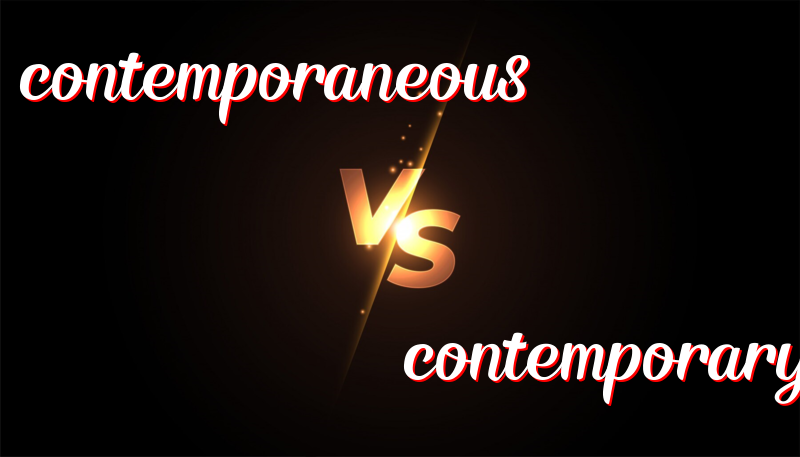英語單詞contemporaneous 與 contemporary的區別
October 18, 2024
同時性(Contemporaneous)與當代(Contemporary)的區別
英語中,”contemporaneous” 和 “contemporary” 都涉及時間的概念,但這兩個詞在用法上有著細微的差別。讓我們來深入探索這兩個詞的歷史、用法及記憶差異的竅門。
詞源與歷史
“Contemporaneous” 源自拉丁語 “contemporaneus”,由 “con-” (共同)和 “tempor-” (時間)組成,指涉的概念是”在相同時間發生的”。而 “Contemporary” 則來自拉丁語 “contemporarius”,同樣由 “con-” (共同)和 “tempor-” (時間)構成,然而,”contemporary” 更常用來描述現代或當代的事物。
用法
1. Contemporaneous:
這個詞通常用來描述兩個或多個現象或事件在相同的時間內發生。它通常用來對比或比較不同事物在時間上的一致性。
- Example 1: The contemporaneous rise of jazz and blues music influenced each other greatly.
同時期爵士樂和藍調音樂的興起彼此之間有很大的影響。 - Example 2: These two theories were developed contemporaneously during the 19th century.
這兩個理論是在19世紀同時發展的。 - Example 3: The artist’s contemporaneous works show a transition in style.
這位藝術家的同時期作品展示了風格上的轉變。 - Example 4: Many historical records show that these events were contemporaneous.
許多歷史記錄顯示這些事件是同時發生的。 - Example 5: Archaeologists discovered two contemporaneous civilization sites.
考古學家發現了兩個同時期文明遺址。
2. Contemporary:
這個詞通常用來描述當代的或屬於同一時期的事物。它也可以形容一個人或物與其它在同一時間存在的東西。
- Example 1: Contemporary art often challenges traditional aesthetics.
當代藝術經常挑戰傳統美學。 - Example 2: The novelist’s contemporary writers were also quite famous.
這位小說家的同時代作家也非常有名。 - Example 3: Contemporary technology is reshaping our daily lives.
當代技術正在重塑我們的日常生活。 - Example 4: Critics say that the contemporary style is too avant-garde.
評論家們認為當代風格過於前衛。 - Example 5: She has a deep appreciation for contemporary dance.
她對當代舞蹈有深入的欣賞。
記憶竅門
要記住這兩個詞的差異,可以使用以下方法:
- “Contemporaneous” 強調 “同時”(考慮結尾的 “-ous” 表示”大量的”或”充滿的”,指向事件同時發生的量)。
- “Contemporary” 強調 “當代”(中間的 “temp” 可提醒你時間的當下性,即現代或同時期)。
總結
總體來說,”contemporaneous” 用於描述在相同時間點或時間段內發生的事物,而 “contemporary” 則更常用於描述當代的事物或與某物同時代的事物。透過文中提到的記憶竅門,你應該能更清楚地區分這兩個詞的用法。希望這則描述能幫助您在英語使用中更精確地選擇正確的詞彙。

Leave a Reply
You must be logged in to post a comment.